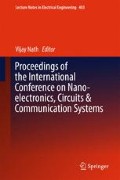Abstract
Renewable energy sources such as hydro, solar, wind, biomass, geothermal, and tidal can be used as an alternative source of power in remote area applications, and also, such sources provide a clean and environment-friendly power. However, the main drawback of using renewable energy sources for these deserted places is the fluctuating nature and that creates problems in matching the load demand. Combinations of renewable energy sources with conventional generators make the solution more viable and affordable. For overcoming the technical and financial contingencies associated with renewable energy sources, proper control of power, coordination of subsystems, energy storage, and power quality are the main challenges. The present paper describes the theory and simulation of SSSC, a flexible alternating current transmission systems (FACTS) controller used in the wind power system. Two groups of wind turbine generator systems are used to design this wind power system which is producing electricity for isolated locations. In this paper, SIM POWER SYSTEM toolbox of MATLAB software is used for system simulation to investigate the effect of SSSC on the voltage profiles under different loading conditions and also considered for active and reactive power congestion relief of the induction machines.
Access this chapter
Tax calculation will be finalised at checkout
Purchases are for personal use only
References
Al-Majed SI, Fujigaki T (2010) Wind power generation: an overview. In: Proceedings of the international symposium modern electric power systems (MEPS), IEEE Xplore Press, Wroclaw, Poland, pp 1–6, 20–22 Sept 2010
Ahilan T, Mohammed KP, Arumugham S (2009) A critical review of global wind power generation. Am J Appl Sci 6:204–213
John Paserba J (2003) How FACTS controllers benefit AC transmission systems. IEEE Trans Power Delivery 1:949–957
Hingorani NG, Gyugyi L (2000) Understanding FACTS, concepts and technology of flexible AC transmission systems. IEEE Press, New York
Breuer W, Povh D, Retzmann D, Teltsch E (2004) Role of HVDC and FACTS in future power systems. In: Shanghai Power Conference, CEPSI- 2004, Shanghai
Panda Sidhartha (2010) Modelling, Simulation and optimal tuning of SSSC-based controller in a multi-machine power system. World J Model Simul UK 6(2):110–121
Gandhar Abhishek, Singh Balwinder, Khanna Rintu (2012) Impacts of FACTS technology-a state of art review. Int J Innovative Technol Exploring Eng (IJITEE) 1(4):28–31
Gyugyi L, Schauder CD, Sen KK (1997) Static synchronous series compensator: a solid-state approach to the series compensation of transmission lines. IEEE Trans Power Delivery 12(1):406–417
Reddy KRS, Padhy RN, Patel RN (2006) Congestion management in deregulated power system using FACTS devices. IEEE Trans Power Syst 21(2)
Sode-Yome, Mithulananthan N, Kwang Lee Y (2007) A comprehensive comparison of FACTS devices for enhancing static voltage stability. IEEE Trans Power Delivery 06:1292–1298
Gupta S, Tripathi RK, Shukla RD (2010) Voltage stability improvement in power systems using facts controllers: state-of-the-art review. In: IEEE International conference on power control and embedded system (ICPCES), pp 1–8, Jan 2010
Thirumalaivasan R, Janaki M, Prabhu N (2013) Damping of SSR using subsynchronous current suppressor with SSSC. IEEE Trans Power Syst 28(1)
Divan D, Johal, H (2007) Distributed facts—A new concept for realizing grid power flow control. IEEE T Power Electr 22(6) 2253–2260
Author information
Authors and Affiliations
Corresponding author
Editor information
Editors and Affiliations
Rights and permissions
Copyright information
© 2017 Springer Nature Singapore Pte Ltd.
About this paper
Cite this paper
Gandhar, A., Singh, B., Khanna, R. (2017). Effect of Static Synchronous Series Compensator on Power Balancing in Wind Farms. In: Nath, V. (eds) Proceedings of the International Conference on Nano-electronics, Circuits & Communication Systems. Lecture Notes in Electrical Engineering, vol 403. Springer, Singapore. https://doi.org/10.1007/978-981-10-2999-8_16
Download citation
DOI: https://doi.org/10.1007/978-981-10-2999-8_16
Published:
Publisher Name: Springer, Singapore
Print ISBN: 978-981-10-2998-1
Online ISBN: 978-981-10-2999-8
eBook Packages: EngineeringEngineering (R0)

